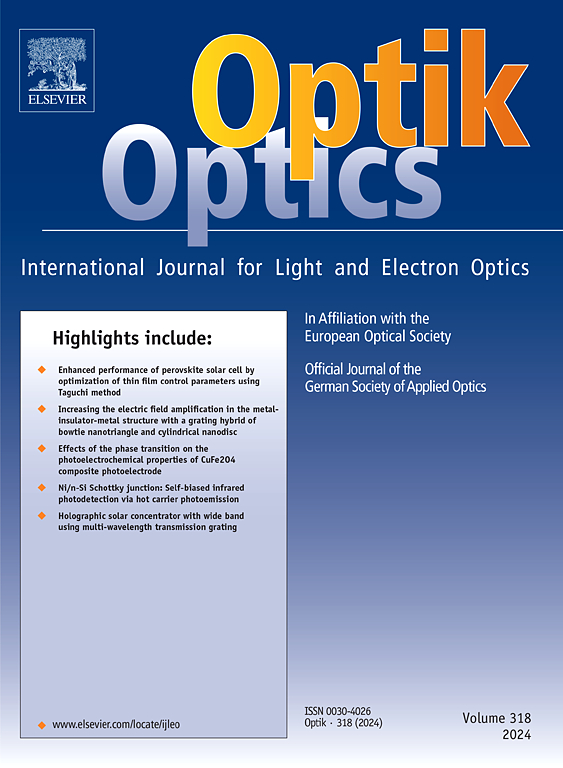散焦波前像差的计算定标方法
IF 3.1
3区 物理与天体物理
Q2 Engineering
引用次数: 0
摘要
在干涉测量中,如果轴向位移持续存在,则在测量波前上叠加一个散焦波前,必须将其去除以确保准确测量。仅功率去除在低na光学中是有效的,但在高na光学中就不适用了,并且可能导致假球像差。针对这一问题,提出了基于泰勒展开的修正方法。然而,它们缺乏精度,因为它们不能提供准确和稳定的散焦波前扩展。结果利用正交多项式理论给出了离焦波前的一个严格的正交展开式,即Zernike展开式。高斯超几何函数允许散焦波前和泽尼克球差项之间的内积的显式公式。我们评估了该方法的收敛速度,并观察到扩展以指数收敛于实际波前形状。以实际的透镜设计为例,将新方法与传统的Taylor方法和数值方法的结果进行了比较。我们的理论方法与数值方法完全相容。结论新方法与数值方法的相容性证实了散焦波前的泽尼克展开在理论上是可行的。因此,该理论为关于处理散焦波前的ISO 10110-5和ISO/TR 14999-2的讨论提供了理论基础。本文章由计算机程序翻译,如有差异,请以英文原文为准。
Computational calibration method for defocused wavefront aberration
Background
In interferometry, if an axial displacement persists, a defocused wavefront is superimposed on the measurement wavefront, which must be removed to ensure accurate measurements. Power-only removal, which is effective for low-NA optics, becomes inadequate for high-NA optics and potentially leads to false spherical aberrations. To address this issue, correction methods based on Taylor expansion have been proposed. However, they lack precision as they do not provide an accurate and stable expansion of the defocused wavefront.
Results
We aim to provide a rigorous orthogonal expansion, specifically, the Zernike expansion, of the defocused wavefront using the theory of orthogonal polynomials. The Gaussian hypergeometric function allows for the explicit formulation of the inner products between the defocused wavefront and Zernike spherical aberration terms. We evaluated the convergence speed of the proposed method and observed that the expansion converged exponentially to the actual wavefront shape. Using an actual lens design, we compared the results of our new method, the conventional Taylor method, and a numerical method. Our theoretical method demonstrated complete compatibility with the numerical method.
Conclusions
The compatibility between our new method and the numerical method confirms that the Zernike expansion of the defocused wavefront is formulated theoretically. Thus, this theory provides a theoretical foundation for discussions regarding ISO 10110–5 and ISO/TR 14999–2 for handling defocused wavefronts.
求助全文
通过发布文献求助,成功后即可免费获取论文全文。
去求助
来源期刊

Optik
物理-光学
CiteScore
6.90
自引率
12.90%
发文量
1471
审稿时长
46 days
期刊介绍:
Optik publishes articles on all subjects related to light and electron optics and offers a survey on the state of research and technical development within the following fields:
Optics:
-Optics design, geometrical and beam optics, wave optics-
Optical and micro-optical components, diffractive optics, devices and systems-
Photoelectric and optoelectronic devices-
Optical properties of materials, nonlinear optics, wave propagation and transmission in homogeneous and inhomogeneous materials-
Information optics, image formation and processing, holographic techniques, microscopes and spectrometer techniques, and image analysis-
Optical testing and measuring techniques-
Optical communication and computing-
Physiological optics-
As well as other related topics.
 求助内容:
求助内容: 应助结果提醒方式:
应助结果提醒方式:


